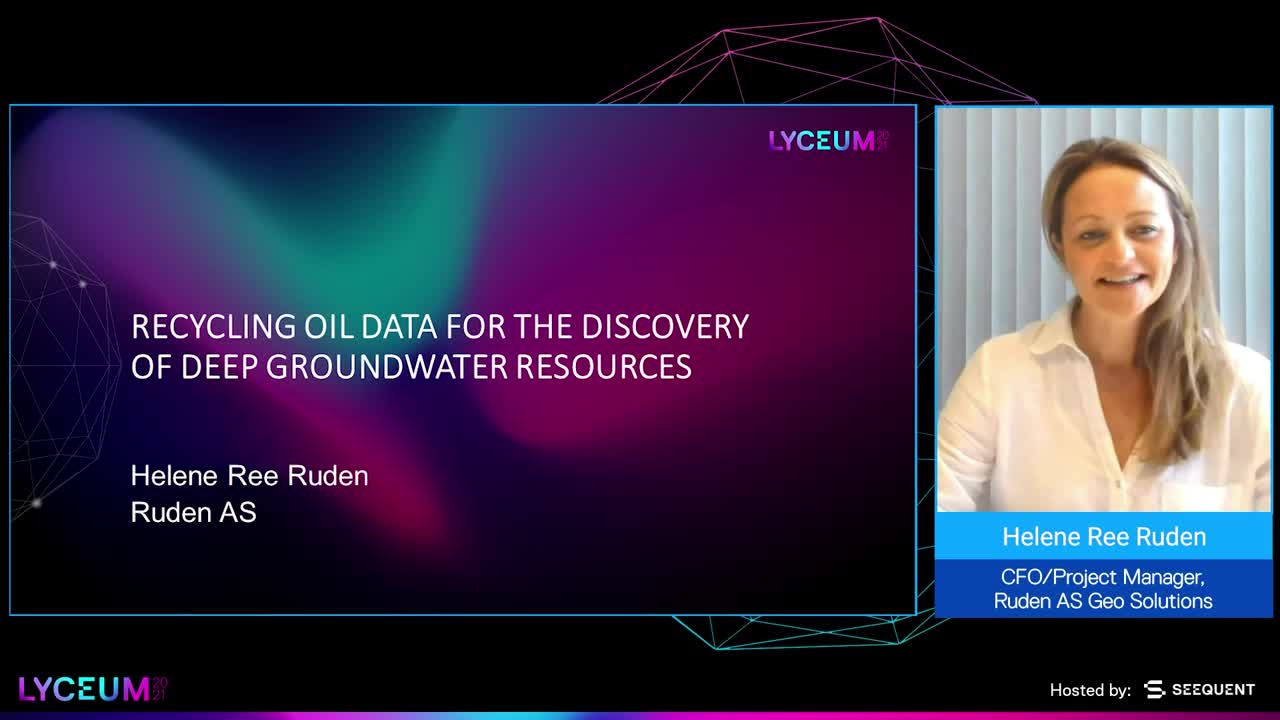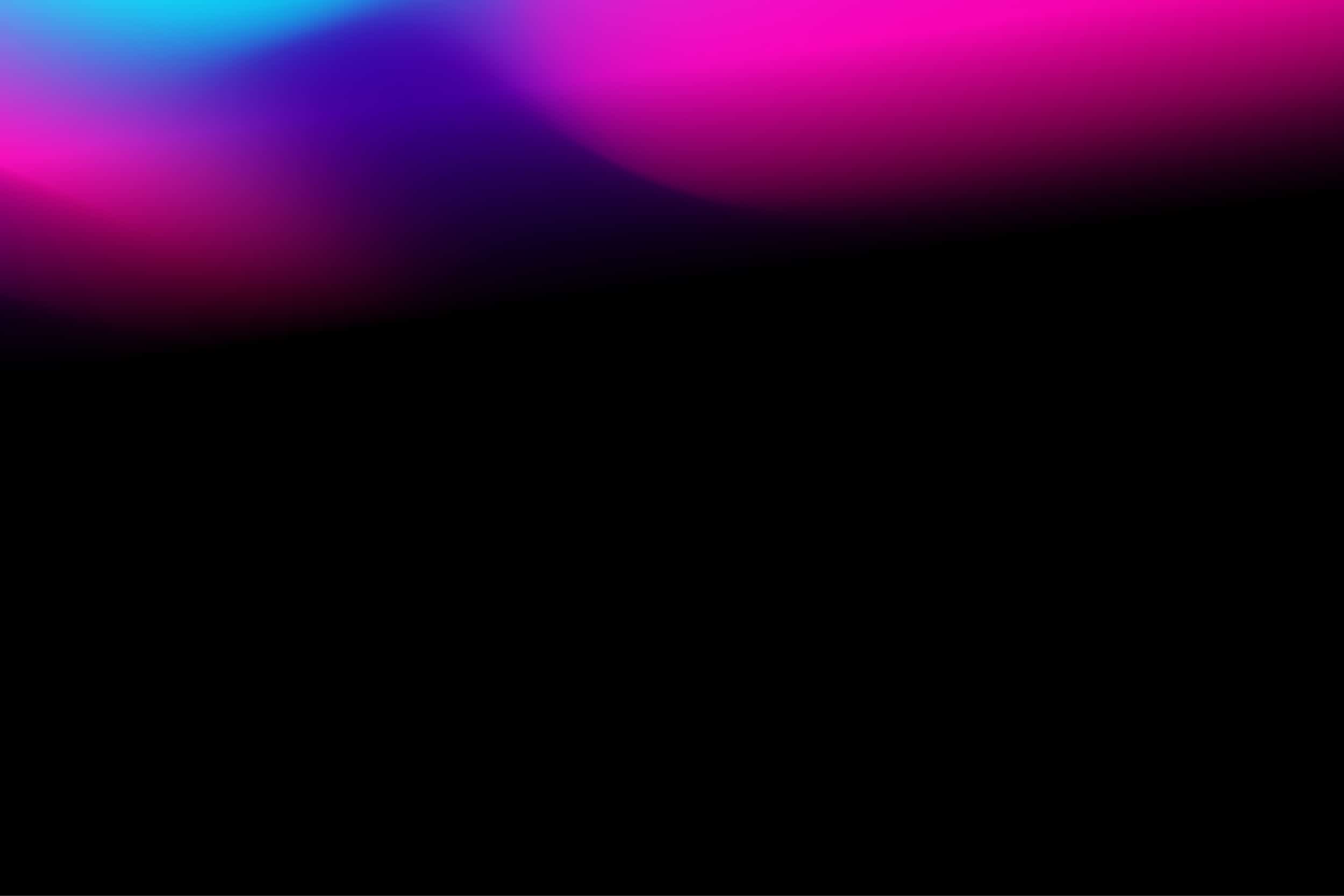Lyceum 2021 | Together Towards Tomorrow
Ruden AS has developed an innovative method that uses existing data and technology from the oil industry, combined with applied hydrogeology to search for water in regions of water scarcity.
This is known as the Search Model. Helene will present about a project commissioned by the Norwegian Ministry of Foreign Affairs, in which the Search Model has been successfully applied in Tanzania and used to discover freshwater indications in Somalia.
Overview
Speakers
Helene Ree Ruden
CFO & Project Manager, Ruden AS
Duration
20 min

See more Lyceum content
Lyceum 2021Find out more about Seequent's mining solution
Learn moreVideo Transcript
[00:00:00.335]
(relaxed electronic music)
[00:00:11.010]
<v ->My name is Helena Ree,</v>
[00:00:13.130]
and I work for a company called Ruden AS from Norway.
[00:00:17.875]
Thank you so much Seequent and Lyceum for having me here,
[00:00:22.810]
I’m very excited to share this exciting project with you
[00:00:26.940]
on how we use data and technology
[00:00:29.770]
to identify until now hidden,
[00:00:32.350]
deep, fresh groundwater resources.
[00:00:35.180]
This presentation will take you through
[00:00:37.090]
how we work with old and new data to do this work.
[00:00:43.460]
The oil industry and hydrogeology have many common features,
[00:00:47.660]
but they have been separated for a long time,
[00:00:50.630]
and in Ruden we think it’s a shame
[00:00:52.600]
not to use this valuable data from the oil industry
[00:00:55.710]
for the greater good.
[00:00:57.460]
So we combine these two
[00:01:00.110]
by taking competence and information from the oil industry
[00:01:03.670]
to get a better understanding of the subsurface
[00:01:06.500]
and the resources currently present there.
[00:01:10.740]
So by recycling technology,
[00:01:13.390]
data and competence from the oil industry,
[00:01:16.010]
this enables us to look for other resources than oil.
[00:01:24.170]
This is a quick overview
[00:01:25.810]
of the water scarcity situation in the world today,
[00:01:29.540]
and please have a specific look
[00:01:31.910]
at the African continent and its neighboring countries
[00:01:35.810]
where the vulnerability is higher
[00:01:39.670]
and the lack of resilience is greater
[00:01:43.510]
than any other place in the world today.
[00:01:48.770]
And when we add something called passive margins,
[00:01:52.440]
which is large thicknesses of sediments,
[00:01:55.900]
where vast amounts of fresh water can be stored.
[00:02:00.770]
You can see this applies
[00:02:02.680]
to most coastal countries in the world.
[00:02:06.910]
And when you look at the water scarcity map in the back
[00:02:11.480]
combined with this passive margins,
[00:02:13.840]
our attention was specifically brought
[00:02:16.370]
to the horn of Africa and East of Africa.
[00:02:19.750]
So, with our current access
[00:02:23.130]
to some of this geological data
[00:02:25.680]
and the combining this
[00:02:27.330]
with the desperate need of water in this region,
[00:02:30.300]
our attention was brought to this part of the world.
[00:02:36.290]
In 2007, our idea was born.
[00:02:39.670]
We started looking at seismic lines
[00:02:42.610]
from sixties and seventies to conceptually test our idea.
[00:02:50.070]
This cross section you see top right
[00:02:52.720]
is based on interpretation from seismics,
[00:02:57.040]
more than 1000 kilometers of seismic survey data,
[00:03:00.990]
borehole logs and completion reports
[00:03:03.460]
from previous oil exploration activities in East Africa.
[00:03:09.660]
We decided to test this conceptual model
[00:03:13.460]
and found funding to execute this project in Tanzania.
[00:03:18.250]
In this project we also heavily lean on
[00:03:20.730]
competence and technology from the oil sector.
[00:03:25.540]
This rig you see in the picture
[00:03:27.620]
is taken from an onshore oil exploration field.
[00:03:32.220]
We completed borehole geophysical logging,
[00:03:36.680]
also a technique taken from the oil sector,
[00:03:40.870]
and the result of this specific execution in Tanzania
[00:03:47.360]
were also the water was tested and sampled
[00:03:49.960]
by the local authorities to make sure the water was fresh.
[00:03:55.560]
The result and impact of what was initially an idea,
[00:03:59.710]
it’s now a sustainable water capacity
[00:04:02.870]
for a population of more than 1.2 million people.
[00:04:11.840]
This workflow was set into a system
[00:04:17.230]
where we like to call this a search model.
[00:04:20.480]
So it’s like a recipe for identifying
[00:04:22.800]
deep groundwater based on oil data.
[00:04:26.400]
We do literature review, seismic interpretation
[00:04:30.690]
and well log interpretation,
[00:04:33.080]
and all of these activities form the base
[00:04:36.050]
for what we call the search model,
[00:04:38.840]
to enable us to identify all this fresh water.
[00:04:42.760]
As you can imagine, we in Ruden,
[00:04:44.690]
we employ people from both the oil sector
[00:04:47.830]
and the more traditional water and hydrogeology sector
[00:04:51.960]
to make sure this puzzle is figured out.
[00:05:00.530]
We presented our idea of our knowledge
[00:05:05.160]
on the current geological settings in Somalia,
[00:05:07.590]
it’s quite similar to that in Tanzania,
[00:05:11.210]
and we presented the Tanzania project
[00:05:14.840]
to the Norwegian Ministry of Foreign Affairs.
[00:05:17.640]
And we created a project that is today led by Ruden
[00:05:22.420]
and it’s funded by
[00:05:23.640]
the Norwegian Ministry of Foreign Affairs,
[00:05:25.820]
and of course the beneficiary of this project
[00:05:28.220]
is the Somalia population.
[00:05:30.600]
We have a fantastic extended team project and contributors.
[00:05:34.740]
We have Petrel from Schlumberger,
[00:05:37.630]
we have Leapfrog from Seequent,
[00:05:40.080]
we have lots of data from Swalim,
[00:05:42.740]
which is Somalian Water and Land Information Management.
[00:05:47.070]
We have researchers from Oxford University
[00:05:49.770]
and also data and software competence
[00:05:53.830]
locally here in Norway from Sintef.
[00:05:59.920]
So we are now building a conceptual model of Somalia,
[00:06:03.510]
and this is the first time in history
[00:06:05.860]
where satellite data and geological data
[00:06:08.940]
has been interpreted and integrated
[00:06:11.560]
into one big geological model.
[00:06:15.630]
And we use the satellite data to understand
[00:06:18.100]
the volumes that goes into this aquifer system,
[00:06:21.660]
and we use the geological data
[00:06:23.370]
to understand more about the behavior of the water
[00:06:26.050]
and where is it stored.
[00:06:28.950]
So the output of this conceptual model
[00:06:32.800]
is this beauty to the right,
[00:06:35.060]
which is a geological model
[00:06:38.460]
that integrates seismics, wells data, literature,
[00:06:43.150]
and part of this integration
[00:06:46.120]
is done by Leapfrog from Seequent.
[00:06:49.640]
And just to make sure you see the whole picture,
[00:06:53.250]
this geological model you see here
[00:06:55.410]
is the whole nation of Somalia.
[00:06:58.320]
So it’s an enormously big,
[00:07:00.510]
enormous model, very high resolution,
[00:07:05.230]
and this has to our knowledge never been done before.
[00:07:09.460]
And this geological model has already given us,
[00:07:13.800]
we have already found indications of freshwater,
[00:07:17.480]
we have already proposed eight drilling sites
[00:07:20.050]
and 40 information targets.
[00:07:25.290]
This is our contribution,
[00:07:28.460]
and thanks to software like Leapfrog
[00:07:30.990]
we are able to explore where no one has looked before.
[00:07:35.200]
Thank you.
[00:07:36.897]
(dramatic electronic music)
[00:07:45.432]
(logo whooshing)





